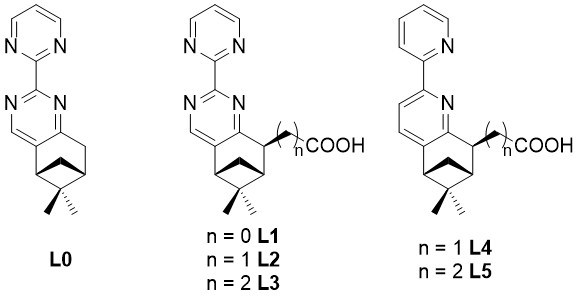Enantiopure ligands and their luminescent lanthanide complexes
One of the possible ways for predetermining the stereochemistry of a metal centre is through diastereoselective synthesis: the chiral information is transferred from the chiral ligand to the metal ion, enabling the preferential formation of one stereoisomer. Ligands containing a chiral pinene moiety are one type of such molecules and they have been used extensively to control the configuration in complexes of transition metals.[1] If a carboxylic unit is also attached to this backbone these ligands form complexes with interesting luminescent and supramolecular features when reacted with lanthanide(III) ions.[2]
We have synthesized and fully characterized a series of chiral ligands with a bipyrimidine (L0-L3) or bipyridine backbone (L4, L5). These ligands were further employed in complexations with Eu(III) and Tb(III) ions. The characterization of the obtained complexes will be presented herein.

[1] Olimpia Mamula, Alex von Zelewsky Coord. Chem. Rev. 2003, 242, 87-95.
[2] Olimpia Mamula, Marco Lama, Helen Stoeckli-Evans, Sergiu Shova Angew. Chem. Int. Ed. 2006, 45, 4940-4944.